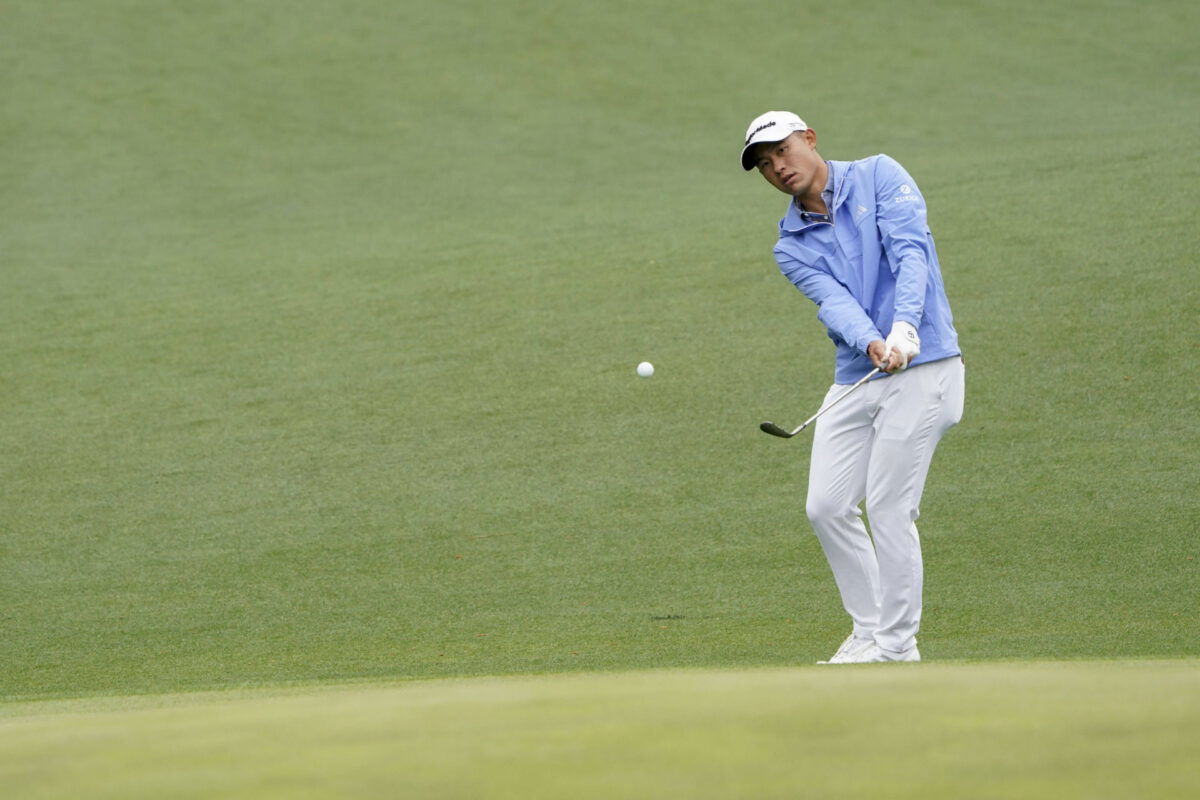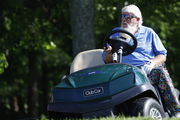
Imago
PGA, Golf Herren The Masters – Practice Round Apr 3, 2023 Augusta, Georgia, USA Collin Morikawa chips onto the no. 14 green during a practice round for The Masters golf tournament at Augusta National Golf Club. Augusta Augusta National Golf Club Georgia USA, EDITORIAL USE ONLY PUBLICATIONxINxGERxSUIxAUTxONLY Copyright: xKatiexGoodalex 040323_TheMasters_0204. Image Courtesy: IMAGO

Imago
PGA, Golf Herren The Masters – Practice Round Apr 3, 2023 Augusta, Georgia, USA Collin Morikawa chips onto the no. 14 green during a practice round for The Masters golf tournament at Augusta National Golf Club. Augusta Augusta National Golf Club Georgia USA, EDITORIAL USE ONLY PUBLICATIONxINxGERxSUIxAUTxONLY Copyright: xKatiexGoodalex 040323_TheMasters_0204. Image Courtesy: IMAGO
Golf is a tricky sport. Even the best and most accurate players in the world can’t guarantee finding the short grass with every stroke. Just ask the pros, who more often than not find themselves hitting from roughs and bunkers after windy conditions or narrow fairways result in bad tee or approach shots. But one skill that most of them have mastered is their short game. Hence, it doesn’t matter where their long shaft swings go; they are confident of being able to secure at least a par if not better. Today, we’re here to learn the art of scrambling from some of them.
Watch What’s Trending Now!
You may face a scramble from any point on the course. Having the ability to escape is the best way you lower your handicap drastically. Whether you’re trying to escape the tall grass or get out of the bunker, your stroke needs to give you enough advantage for you to score at least a par. The more practice you put into your short game, the more saves you will be able to make. And if you’re already good at golf, then you will become great at it by mastering scrambling. But it won’t come that easily. Even Tiger Woods, who was exceptional in short games, had the highest average of 69.78% of saves made through scrambling in 2001. There are a few others who have been experts at scrambling over the years. Let’s see what tips they had to share to become good at it.
Top Stories
Pebble Beach Looks Unrecognizable as Harsh Weather Destroys Iconic Golf Course

PGA Tour Hands Veteran Pro 1-Year Ban Despite Severed LIV Golf Ties

Phil Mickelson’s LIV Golf Hope Shatters After Akshay Bhatia Decision

John Daly to Keep Masters Tradition Alive Despite Hooters’ Bankruptcy Shutdown

Tiger Woods Finally Answers Nelly Korda & Co.’s Demands With Major LPGA Announcement

ADVERTISEMENT
Hideki Matsuyama
As an amateur golfer, Hideki Matsuyama had the most outstanding scrambling success rate. He averaged more than 70% scrambling saves after mishits. According to Harewood Golf Club, what he and many others did was make sure they had the right tools to scramble. Apparently, the secret lies in using lower-lofted clubs. Here are the three tips they have provided:
- Ensure that the clubs (irons or wedges) have a lower loft to reduce time in the air and hit better chip-and-run shots.
- Dedicate more time to your short game than you do to swing off the tee.
- Practice putting extensively to ensure your scrambles get converted effectively.
View this post on Instagram
ADVERTISEMENT
The more you practice these routines, the better your game will get, and your handicap will drastically improve. Eventually, you will gain the confidence to score a par from any part of the course. Your ability to strategize ahead of time will also improve.
ADVERTISEMENT
Collin Morikawa
The 2-time major winner, Collin Morikawa, has a different take on scrambles. Being one of the most accurate approach shot strikers on the PGA Tour, he believes that it’s important to read the lie before determining your next move. Understanding how deep the ball is sinking will help you decide which club to use to hit it. If you have a great lie in a short grass rough, then you can try to hit your scramble with a 3-wood or other fairway woods as well, depending on the distance you need to gain. However, for tall grass roughs like those at Oakmont, you will need thinner blades like those of an iron. Also, the primary goal in tall grass roughs is to ensure you give the ball enough air to get out of the place. The distance is not something you should be focusing on.
Morikawa believes it’s important to pick the right club to get as close to the cup as possible. If you’re scrambling from a tough lie, then you need to give yourself the best shot at ensuring the following stroke is with a putter. However, if the situation doesn’t allow you to reach the green, then your next possible goal should be to get as close to the green while still staying on the fairway as possible. Even on a good lie from a bunker, if the distance is upwards of 270 yards, then there is no reason for you to risk trying to reach it. Instead, just play for a stroke at about 220-240 yards with the clubs at your disposal and find the shortest grass you can.
ADVERTISEMENT
Jim Furyk
Jim Furyk was 44 when he was ranked the best scrambler on the PGA Tour in 2014. The 2003 U.S. Open winner was exceptional at escaping tricky situations. A lot of credit for that goes to the checklist of tips he used to follow to not lose too many strokes, even off bad drives or approach shots. Here are the 5 things he always kept in mind:
- Don’t let frustration and anger take over your gameplay and affect your next shot as well.
- Always play short of the cup rather than overhitting it. It’s easier to plan a putt from the perspective you hit the initial scramble.
- Learn to hit high and low. Different situations demand different kinds of scramble shots. You should be prepared to jump it over an elevation or hit it flatter.
- Master putting to ensure a better conversion rate.
- Learn from the mistakes you make to understand your stroke better for the next time you’re in that position.
With these vital guidelines, Jim Furyk was able to capture 17 PGA Tour titles. You will also be able to improve your game if you practice them religiously on the course.
ADVERTISEMENT
ADVERTISEMENT
ADVERTISEMENT
ADVERTISEMENT

